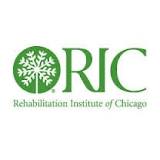Evaluating Error Augmentation for Neurorehabilitation
| Status: | Completed |
|---|---|
| Conditions: | Neurology |
| Therapuetic Areas: | Neurology |
| Healthy: | No |
| Age Range: | 18 - Any |
| Updated: | 4/21/2016 |
| Start Date: | January 2008 |
| End Date: | March 2012 |
This is a sub-project of a larger NIDRR Grant. One promising form of robotic training that
leverages the power of neuro-plasticity is error augmentation. In this paradigm the computer
singles out and magnifies a stroke survivor's movement errors from a desired trajectory,
thus forcing the subjects to strengthen their control. Using the VRROOM, a state-of-the-art
system which uses haptics (robotic forces) and graphics (visual display) interfaces, a
subject's desired trajectory can be determined and the movement errors can be amplified in
real-time with dramatic results. This project evaluates a practical approach of error
augmentation, using therapist-driven trajectories. The investigators intend to determine
clinical efficacy of several types of therapist-assisted error augmentation on retraining
the nervous system in functional activities. The investigators will test two experimental
treatments in a crossover design. The investigators hypothesize that combined haptic and
visual error augmentation will lead to the best functional recovery.
leverages the power of neuro-plasticity is error augmentation. In this paradigm the computer
singles out and magnifies a stroke survivor's movement errors from a desired trajectory,
thus forcing the subjects to strengthen their control. Using the VRROOM, a state-of-the-art
system which uses haptics (robotic forces) and graphics (visual display) interfaces, a
subject's desired trajectory can be determined and the movement errors can be amplified in
real-time with dramatic results. This project evaluates a practical approach of error
augmentation, using therapist-driven trajectories. The investigators intend to determine
clinical efficacy of several types of therapist-assisted error augmentation on retraining
the nervous system in functional activities. The investigators will test two experimental
treatments in a crossover design. The investigators hypothesize that combined haptic and
visual error augmentation will lead to the best functional recovery.
Inclusion Criteria:
- adult (age >18)
- survived a single cortical stroke at least 6 months previously involving ischemia or
hemorrhage of the middle cerebral artery (MCA),
- demonstrated the presence of some active shoulder and elbow movement (characterized
by Fugl-Meyer Assessment Upper Extremity scores ranging from 15-50 for ARM 1; 25-50
for ARM 2).
Exclusion Criteria:
- diffuse or multiple lesion sites or multiple stroke events
- bilateral paresis
- severe spasticity or contracture (Modified Ashworth ≥3
- severe concurrent medical problems
- severe sensory deficits
- cerebellar strokes resulting in severe ataxia
- significant shoulder pain
- focal tone management with Botulinim Toxin (Botox®) injection to the hemiparetic
upper extremity (UE) within the previous four months,
- aphasia that would influence the ability to perform the experiment
- cognitive impairment (Mini Mental State Examination < 23/30)
- affective dysfunction that would influence the ability to perform the experiment
- depth perception impairment (< 3 on Stereo Circle Test)
- visual field cut or hemispatial neglect that would influence the ability to
participate in the activity
- inability to provide informed consent
We found this trial at
1
site
Rehabilitation Institute of Chicago The Rehabilitation Institute of Chicago (RIC) is an independent, 501(c)3, non-profit...
Click here to add this to my saved trials
